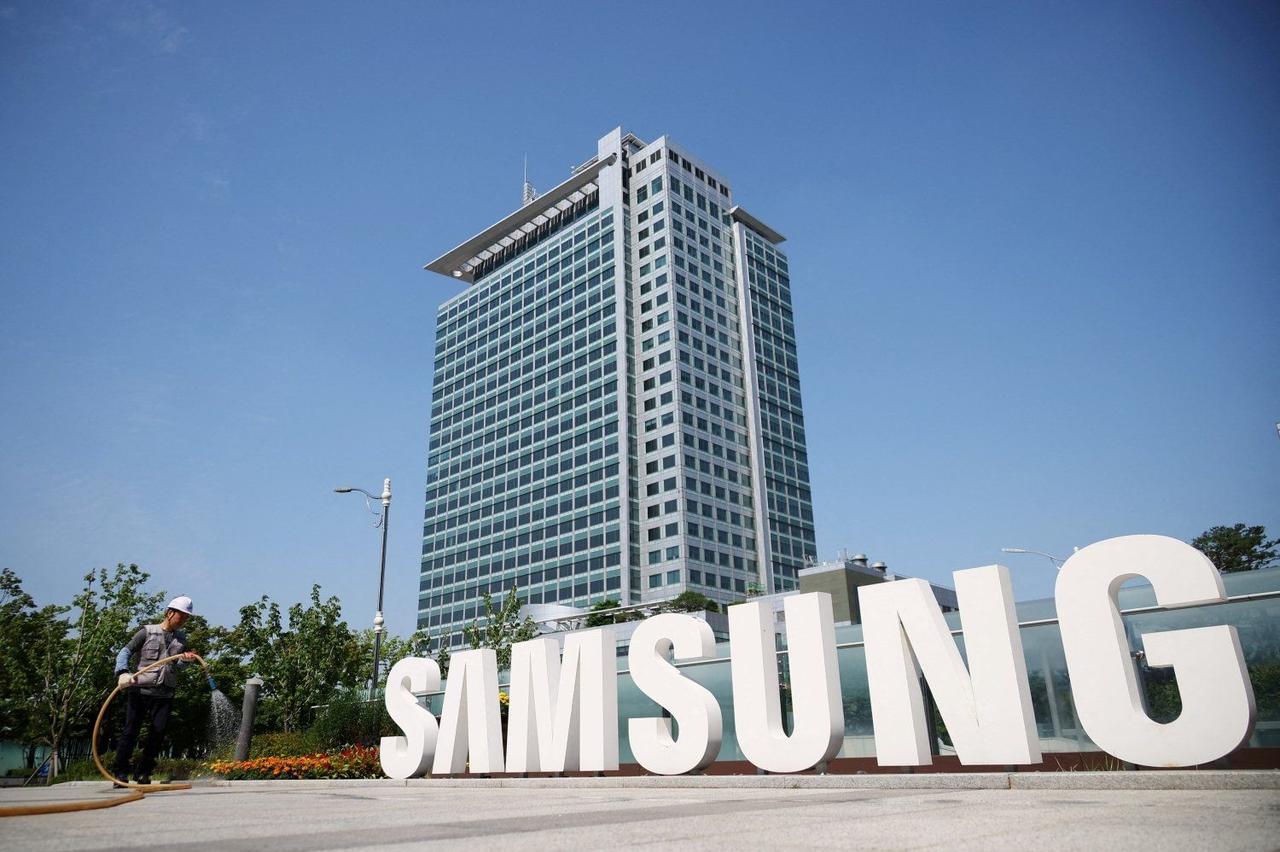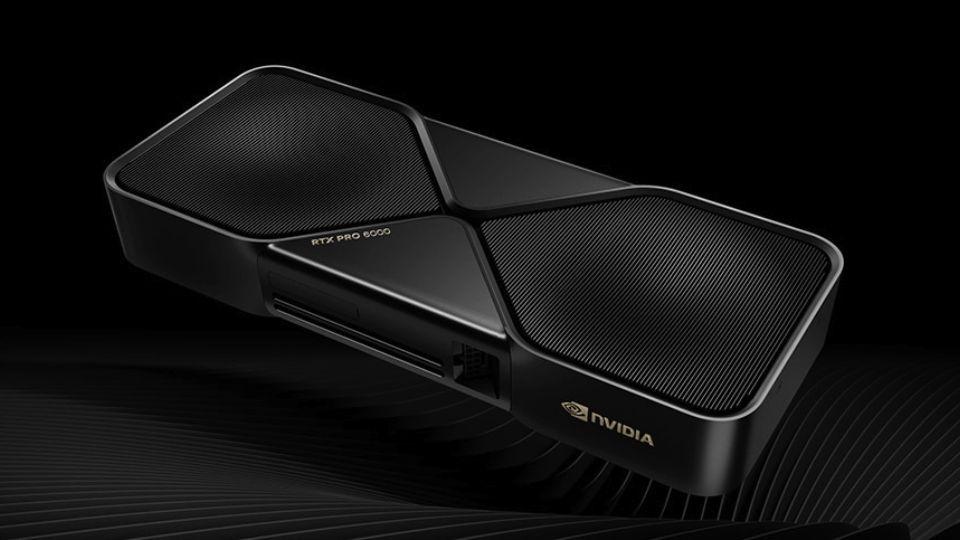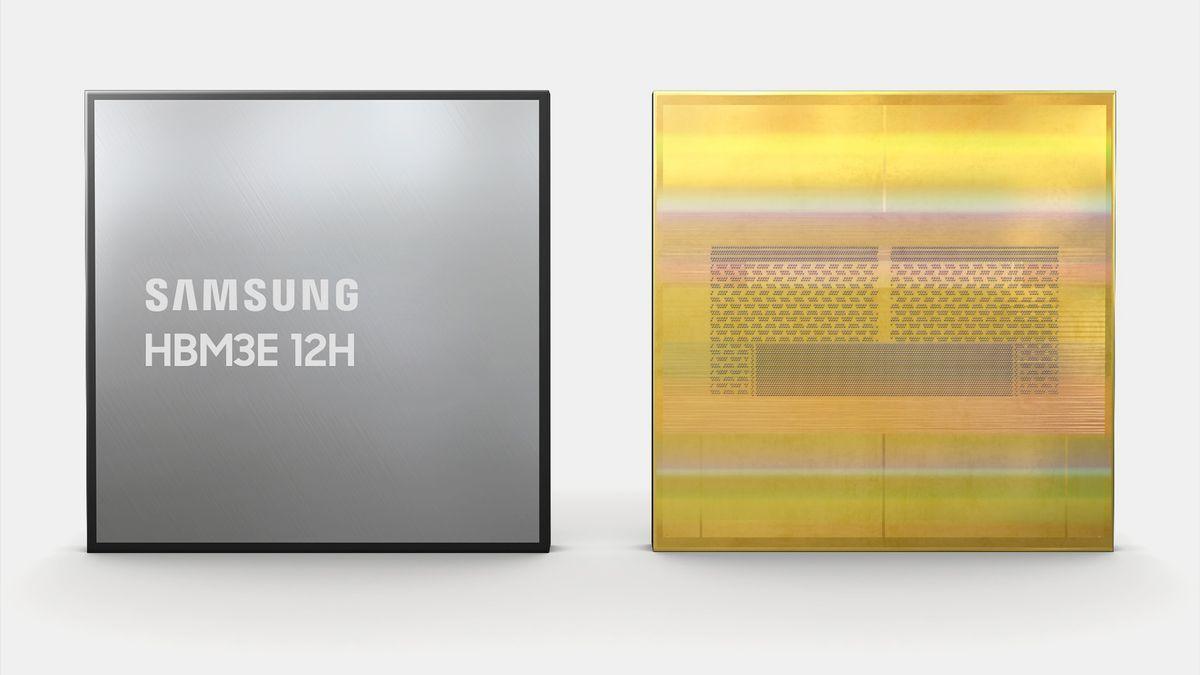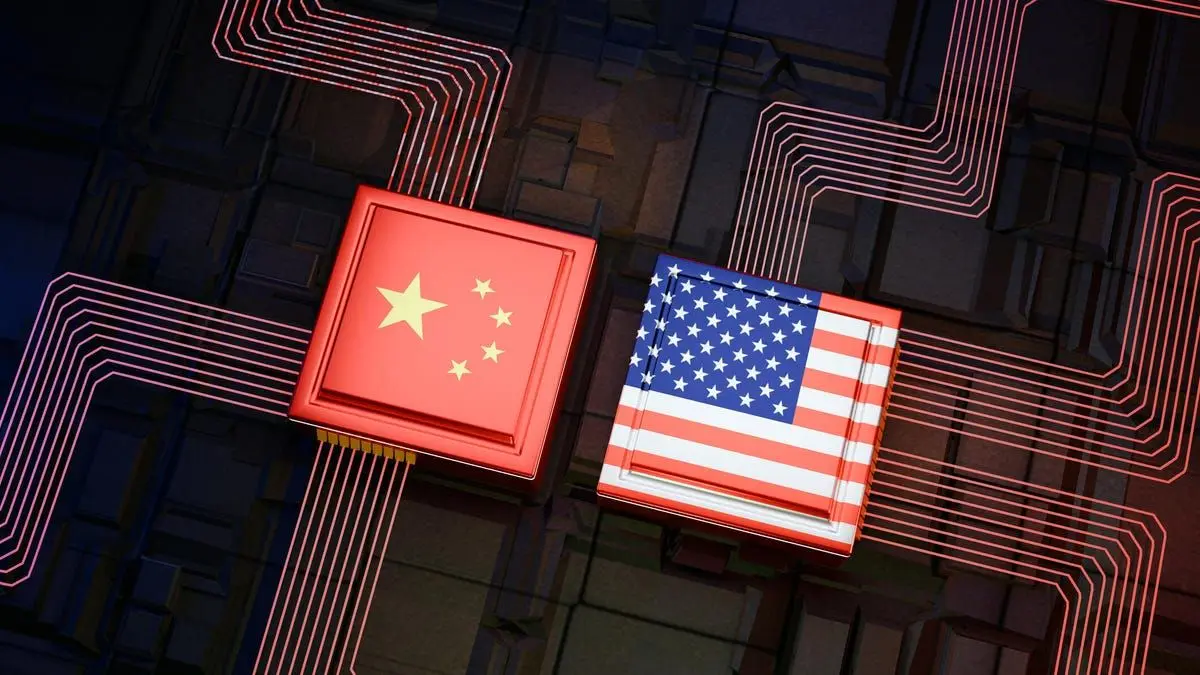Samsung Unveils Industry-First 24Gb GDDR7 DRAM: A Leap Forward for AI Computing
8 Sources
8 Sources
[1]
Samsung Unveils 24Gb GDDR7 DRAM for Next-Generation AI Computing
Commercialisation expected early next year after validation by GPU customers. Samsung Electronics announced this week that it has developed the industry's first 24-gigabit (Gb) GDDR7 (Graphics Double Data Rate 7) DRAM. According to Samsung, the GDDR7 offers the fastest speeds available, making it an optimal solution for next-generation applications. Also Read: Ericsson Enhances Focus on AI, Gen AI and Network APIs at India R&D Centers With speeds for graphics DRAM of 40 gigabits per second (Gbps) -- 25 percent faster than its predecessor -- and a potential boost to 42.5 Gbps, the GDDR7 will serve high-performance markets such as AI workstations, data centers, and beyond traditional graphics uses like gaming and autonomous driving. "After developing the industry's first 16Gb GDDR7 last year, Samsung has reinforced its technological leadership in the graphics DRAM market with this latest achievement," said YongCheol Bae, Executive Vice President of Memory Product Planning at Samsung Electronics. "We will continue to lead the graphics DRAM market by bringing next-generation products that align with the growing needs of the AI market." The new memory chip leverages 5th-generation 10-nanometer (nm) technology, offering a 50 percent increase in cell density while maintaining the same physical footprint. Samsung also introduced power-saving features previously used in mobile devices, improving energy efficiency by over 30 percent. "Power efficiency is also enhanced by applying technologies that were previously used in mobile products to graphics DRAM for the first time," Samsung said. Also Read: Nokia Integrates AI into Altiplano Access Controller for Enhanced Network Automation Validation of the 24Gb GDDR7 in next-generation AI computing systems from major GPU customers is set to begin this year, with plans for commercialisation early next year.
[2]
Samsung Develops Industry's First 24Gb GDDR7 DRAM for Next-Generation AI Computing
New GDDR7 offers industry-leading capacity and speed of over 40Gbps, significantly raising the bar for graphics DRAM powering future applications Validation with major GPU customers to begin this year, production slated for early next year Samsung Electronics, the world leader in advanced memory technology, today announced it has developed the industry's first 24-gigabit (Gb) GDDR7 DRAM. In addition to the industry's highest capacity, the GDDR7 features the fastest speed, positioning itself as the optimum solution for next-generation applications. With its high capacity and powerful performance, the 24Gb GDDR7 will be widely utilized in various fields that require high-performance memory solutions, such as data centers and AI workstations, extending beyond the traditional applications of graphics DRAM in graphics cards, gaming consoles and autonomous driving. "After developing the industry's first 16Gb GDDR7 last year, Samsung has reinforced its technological leadership in the graphics DRAM market with this latest achievement," said YongCheol Bae, Executive Vice President of Memory Product Planning at Samsung Electronics. "We will continue to lead the graphics DRAM market by bringing next-generation products that align with the growing needs of the AI market." The 24Gb GDDR7 utilizes 5th-generation 10-nanometer (nm)-class DRAM, which enables cell density to increase by 50% while maintaining the same package size as the predecessor. In addition to the advanced process node, three-level Pulse-Amplitude Modulation (PAM3) signaling is used to help achieve the industry-leading speed for graphics DRAM of 40 gigabits-per-second (Gbps), a 25% improvement over the previous version. The GDDR7's performance can be further enhanced to up to 42.5Gbps, depending on the usage environment. Power efficiency is also enhanced by applying technologies that were previously used in mobile products to graphics DRAM for the first time. By implementing methods like clock control management and dual VDD design, unnecessary power consumption can be significantly reduced, leading to an improvement of over 30% in power efficiency. To boost operational stability during high-speed operations, the 24Gb GDDR7 minimizes current leakage by using power gating design techniques. Validation for the 24Gb GDDR7 in next-generation AI computing systems from major GPU customers will begin this year, with plans for commercialization early next year.
[3]
Samsung unveils industry's first 24Gb GDDR7 DRAM
Samsung has finally stolen a march in the memory market with 24 Gb GDDR7 DRAM being released for validation in AI computing systems from GPU customers before production - expected early next year - kicks off. Hitting the 24 Gb mark before other DRAM makers will be a welcome relief for the South Korean chaebol as it seeks to overcome the semiconductor division's recent failings. Samsung is claiming the newly developed chips provide a 30 percent plus boost in power efficiency compared to GDDR6, with up to 42.5 Gbps per pin of performance that promises a potential 1.36 TBps of available bandwidth over a 256-bit wide bus. On paper, these figures are the sort of things that get AI accelerators and high-end GPU aficionados salivating, especially considering how important bandwidth is for those intensive AI and gaming workloads such as Ray Tracing and 8K gaming. The 12-nanometer class GDDR7 DRAM uses PAM3 technology, which is billed as the breakthrough enabler for all this high bandwidth. PAM3 allows for three signal levels (instead of the standard two), which is designed to squeeze more out of every clock cycle. That's tech literacy slang for saying this DRAM should outperform anything seen from GDDR6 so far. Samsung is also pitching this 24 Gb chip (equal to 3 GB) for high-capacity video memory configurations, which will make it potentially ideal for Nvidia and AMD's next flagship GPUs like the GeForce 5000 series. (The Reg has heard unconfirmed rumors about a Q1 2025 launch.) However, with both SK Hynix and Micron are also readying their GDDR7 chips, Samsung's shiny new DRAM won't be guaranteed to fix the megacorp's unsteady standing in a highly competitive landscape. Validation of the 24 Gb GDDR7 DRAM chips with GPU customers is set to begin during the remaining months of this year, with final production expected to start in early 2025. It's worth noting that SK Hynix's GDDR7 is hot on its heels, and the recent history suggests it's going to be another tight race with Samsung fighting tooth and nail to hold on to its memory market share.
[4]
Samsung introduces industry's first 24Gb GDDR7 DRAM
Samsung has introduced the industry's first 24-gigabit GDDR7 DRAM, which boasts the highest capacity and speed. This breakthrough memory solution is designed to cater to the demands of next-generation applications, such as data centers and AI workstations. By employing advanced process nodes and PAM3 signaling, the GDDR7 achieves an impressive speed of 40 gigabits-per-second, surpassing its predecessor by 25%. Additionally, Samsung has incorporated power-saving technologies from mobile products to enhance efficiency and reduce unnecessary power consumption by over 30%. To ensure operational stability at high speeds, the GDDR7 incorporates power gating design techniques to minimize current leakage. Samsung plans to begin validating this groundbreaking memory solution in next-generation AI computing systems from major GPU customers later this year, with commercialization expected in early 2025. Commenting on this, YongCheol Bae, Executive Vice President of Memory Product Planning at Samsung Electronics, said:
[5]
Samsung's 24Gb GDDR7 DRAM: A Game-Changer for AI
Samsung Electronics, a global leader in advanced memory technology, has unveiled its groundbreaking 24-gigabit (Gb) GDDR7 DRAM, setting a new standard for high-performance memory solutions. This innovative product not only features the highest capacity in the industry but also delivers unparalleled speed, making it an ideal choice for innovative applications in various fields, such as data centers, AI workstations, and beyond. The introduction of the 24Gb GDDR7 DRAM marks a significant milestone in the evolution of memory technology, promising to transform the way we process and use data in the digital age. The 24Gb GDDR7 DRAM is built upon Samsung's state-of-the-art 5th-generation 10-nanometer (nm)-class technology, which enables a remarkable 50% increase in cell density while maintaining the same package size as its predecessor. By leveraging this advanced process node and incorporating three-level Pulse-Amplitude Modulation (PAM3) signaling, Samsung has achieved an industry-leading speed of 40 gigabits-per-second (Gbps), representing a substantial 25% improvement over the previous generation. Moreover, depending on the specific usage environment, the performance of the GDDR7 can be further optimized to reach an impressive 42.5Gbps. In addition to its exceptional speed, the 24Gb GDDR7 DRAM also showcases significant advancements in power efficiency. By applying mobile product technologies, such as clock control management and dual VDD design, to graphics DRAM for the first time, Samsung has successfully reduced power consumption by over 30%. This innovative approach not only enhances the overall efficiency of the memory solution but also contributes to more sustainable and eco-friendly computing practices. While traditionally associated with graphics-intensive applications like gaming consoles and graphics cards, the 24Gb GDDR7 DRAM's potential extends far beyond these domains. Its unparalleled capacity and speed make it an ideal solution for data-intensive applications in various industries, including data centers, AI workstations, and autonomous driving systems. As the demand for high-performance computing continues to grow exponentially, Samsung's 24Gb GDDR7 DRAM is poised to play a crucial role in allowing the next generation of technological advancements. For instance, in the realm of artificial intelligence, the 24Gb GDDR7 DRAM's high bandwidth and low latency can significantly accelerate the training and inference processes of deep learning models. This enhancement in performance can lead to more accurate and efficient AI systems, unlocking new possibilities in fields such as natural language processing, computer vision, and predictive analytics. Similarly, in data centers, the increased capacity and speed of the GDDR7 can enable faster data processing and analysis, empowering organizations to make data-driven decisions in real-time. Currently, Samsung's 24Gb GDDR7 DRAM is undergoing rigorous validation processes in next-generation AI computing systems from major GPU customers. This collaborative effort ensures that the memory solution meets the stringent requirements of innovative applications and delivers optimal performance in real-world scenarios. Samsung plans to commercialize the 24Gb GDDR7 DRAM in early 2024, making it available to a wide range of customers and partners. While specific pricing details have not been disclosed, industry experts anticipate that the 24Gb GDDR7 DRAM will be competitively priced, considering its advanced features and performance capabilities. As the technology matures and production scales up, it is expected that the cost per gigabit will decrease, making it more accessible to a broader market. Samsung's introduction of the 24Gb GDDR7 DRAM represents a significant leap forward in memory technology, setting the stage for a new era of high-performance computing. With its unmatched capacity, speed, and power efficiency, this innovative solution is poised to transform various industries, from gaming and entertainment to artificial intelligence and autonomous vehicles. As we look towards the future, it is clear that advancements in memory technology will play a crucial role in shaping the digital landscape. Samsung's commitment to pushing the boundaries of what is possible with DRAM technology demonstrates the company's leadership in driving innovation and allowing the next generation of technological breakthroughs. With the 24Gb GDDR7 DRAM, Samsung has once again set the bar high, challenging the industry to reimagine the possibilities of high-performance computing and paving the way for a more connected, intelligent, and data-driven world.
[6]
Samsung Introduces 24Gb GDDR7 DRAM
Samsung Electronics has launched the industry's first 24-gigabit (Gb) GDDR7 DRAM, marking a significant advancement in memory technology. This new memory module offers the highest capacity available in the GDDR7 category and achieves faster data transfer speeds. It is designed to meet the increasing demands of next-generation computing applications, making it a vital component for environments that require high-performance memory solutions. The 24Gb GDDR7 is developed for use in various sectors that need robust and efficient memory performance. Key applications include data centers, which require high-speed memory for large-scale data processing, and artificial intelligence (AI) workstations, where quick memory access is crucial for machine learning and deep learning tasks. Additionally, the 24Gb GDDR7 extends its utility to traditional graphics-intensive platforms such as graphics cards, gaming consoles, and autonomous driving systems. The memory module is built using Samsung's 5th-generation 10-nanometer (nm)-class DRAM technology, increasing cell density by 50% compared to previous generations. This enhancement allows for greater memory capacity without increasing the physical size of the memory package, optimizing space and performance in compact computing systems. The 24Gb GDDR7 also incorporates three-level Pulse-Amplitude Modulation (PAM3) signaling, enabling data transfer rates of 40 gigabits-per-second (Gbps), which is a 25% improvement over the previous GDDR6 standard. Depending on the operational environment, the GDDR7's performance can be further increased to reach speeds of up to 42.5 Gbps, providing flexibility to meet varying computational needs. Power efficiency has been significantly improved by applying technologies originally developed for mobile products, such as clock control management and dual VDD design. These innovations reduce unnecessary power consumption by over 30%, lowering operational costs and improving thermal management in high-performance computing systems. To ensure reliability during intensive, high-speed operations, the 24Gb GDDR7 uses power gating design techniques that minimize current leakage, maintaining stable performance under demanding conditions. Samsung Electronics plans to begin validating the 24Gb GDDR7 in next-generation AI computing systems with major GPU customers within the current year. This process involves thorough testing to ensure compatibility and performance standards are met before the product is commercially released in early next year.
[7]
Samsung develops industry's first 24Gb GDDR7 chip
Samsung Electronics' 24 gigabit GDDR7 DRAM / Courtesy of Samsung Electronics New chip features major upgrades in capacity, performance, power efficiencyBy Nam Hyun-woo Samsung Electronics developed the industry's first 12-nano 24 gigabit (Gb) GDDR7 DRAM, targeting applications in data centers and artificial intelligence (AI) workstations, the company said Thursday. GDDR7, or Graphics Double Data Rate 7, is a graphic DRAM, or dynamic random-access memory, designed to boost the performance of devices like gaming consoles and graphic cards. According to the chipmaker, it plans to commercialize the new chip early next year, beginning its validation for next-generation AI computing systems for major GPU (graphics processing unit) customers within this year. Samsung said the new chip achieved major upgrades in capacity, performance and power efficiency from its predecessor 16Gb GDDR7, which the company developed last year. The 24Gb GDDR7 was produced through 12-nanometer class process technology, which enabled increased cell density to achieve the industry's highest capacity of 24Gb while maintaining the same package size as the predecessor. The new chip also uses three-level Pulse-Amplitude Modulation, or PAM3, signaling technology to enable 40 gigabits-per-second of speed, which is a 25-percent improvement over the previous version. The GDDR7's performance can be further enhanced to up to 42.5Gbps, depending on the usage environment, the company said. Power efficiency is also enhanced by 30 percent, by applying technologies that were previously used in mobile products, such as clock control management and dual VDD design. Clock control management technology reduces power consumption by ensuring that each circuit only operates when necessary. Dual VVD design is a power management technique that lowers external voltage during low-speed operation. "After developing the industry's first 16Gb GDDR7 last year, Samsung has reinforced its technological leadership in the graphics DRAM market with this latest achievement," said Bae Yong-cheol, executive vice president of Memory Product Planning at Samsung Electronics. "We will continue to lead the graphics DRAM market by bringing next-generation products that align with the growing needs of the AI market." Samsung Electronics' 12-layer HBM3e chip / Courtesy of Samsung Electronics Along with high-bandwidth memory (HBM) chips, which are making headlines for their use in AI processors, GDDR chips are also gaining attention for their application in AI services. HBMs are used for high-performing AI processors, as their larger bandwidth enables transferring more data at once, although their transfer speed is slower than comparable GDDR chips. Most AI servers for data centers use HBM-powered AI processors. However, HBMs require higher manufacturing costs and come with less flexibility for application compared to GDDR Chips. It is widely known that HBM chips cost three times more than general DRAMs. Due to these pros and cons, both HBM and GDDR chips are expected to play complementary roles until costs for HBMs decline. HBMs are widely used for high-performance chipsets used for AI learning, while GDDR chips are used for AI inference.
[8]
Samsung Unveils Faster DDR7 DRAM for GPUs, AI Computing
Samsung is continuing to push into DDR7 RAM development as it looks to make gains from the AI surge after apologizing for losing ground to rivals. It announced a 24GB GDDR7 dynamic RAM (DRAM) chip that promises 40Gbps speeds or higher on Thursday. "We will continue to lead the graphics DRAM market by bringing next-generation products that align with the growing needs of the AI market," said Samsung EVP of Memory Product Planning YongCheol Bae in a statement. DRAM, as opposed to standard computer RAM, is primarily used in gaming hardware, graphics cards, and autonomous driving systems. GDDR7 stands for graphics double data rate, meaning the RAM can be used in GPUs. High-end consumer PC builds typically contain DDR4 or DDR5 RAM -- DDR6 hasn't entered mainstream production just yet. Samsung is positioning its 24GB chip as an option for data centers and AI applications, according to its post, so it's not exactly something you'll see as an option for your PC build anytime soon. But the chips could make their way into next-gen graphics cards, which are currently essential for training and running AI operations. As chipmaker Nvidia explains, GPUs can do technical calculations faster and in a more energy-efficient manner than CPUs. This, in part due to GPU parallel processing, scaling abilities, and deep software stack, means graphics cards are best for AI processing needs. Samsung's new 24GB version follows its announcement of a less-powerful 16GB GDDR7 DRAM in July last year. The Korean firm says it plans to begin producing the 24GB DRAM sometime "early next year." But even the 16GB version is substantially more powerful and more energy-efficient than its previous GDDR6 memory, according to Samsung's tests. The newest DRAM took inspiration from mobile device tech to manage its energy efficiency. It has features like clock control management and dual VDD design to reduce energy use by 30%. Clock control management control timing or clocks of the chips, while dual VDD allows for different voltage levels. While more energy-efficient computer hardware is important and essential as firms make power gains, it's difficult to keep AI's energy use down more broadly. Tech giants like Microsoft, Google, and Amazon are looking for more energy sources to meet AI's sky-high power needs -- and are increasingly turning to nuclear plants as a result.
Share
Share
Copy Link
Samsung Electronics has developed the world's first 24-gigabit GDDR7 DRAM, offering unprecedented capacity and speed for next-generation AI applications and high-performance computing.

Samsung Introduces Groundbreaking 24Gb GDDR7 DRAM
Samsung Electronics has unveiled the industry's first 24-gigabit (Gb) GDDR7 (Graphics Double Data Rate 7) DRAM, marking a significant advancement in memory technology. This innovative product is set to revolutionize high-performance computing, particularly in AI applications
1
.Technical Specifications and Performance
The new GDDR7 DRAM boasts impressive specifications:
- Capacity: 24Gb (3GB), the highest in the industry
- Speed: Up to 40 gigabits per second (Gbps), 25% faster than its predecessor
- Potential boost: Up to 42.5 Gbps in optimal conditions
- Process: 5th-generation 10-nanometer (nm) technology
- Cell density: 50% increase while maintaining the same package size
2
Enhanced Power Efficiency
Samsung has implemented several power-saving features:
- Technologies previously used in mobile products applied to graphics DRAM
- Clock control management and dual VDD design
- Over 30% improvement in energy efficiency
- Power gating design techniques to minimize current leakage
2
Applications and Market Impact
The 24Gb GDDR7 DRAM is expected to have wide-ranging applications:
- AI workstations and data centers
- Graphics cards and gaming consoles
- Autonomous driving systems
- High-performance computing in various industries
5
This development positions Samsung as a leader in the graphics DRAM market, potentially impacting competitors like SK Hynix and Micron
3
.Related Stories
Technological Advancements
Key innovations in the GDDR7 DRAM include:
- Three-level Pulse-Amplitude Modulation (PAM3) signaling for increased speed
- Potential bandwidth of 1.36 TBps over a 256-bit wide bus
- Advanced process node enabling higher cell density
3
Future Outlook and Commercialization
Samsung plans to begin validation with major GPU customers later this year, with commercialization expected in early 2025
4
. This timeline aligns with potential releases of next-generation GPUs, such as Nvidia's GeForce 5000 series3
.As the demand for high-performance computing continues to grow, particularly in AI and data-intensive applications, Samsung's 24Gb GDDR7 DRAM is poised to play a crucial role in enabling future technological advancements across various industries
5
.References
Summarized by
Navi
[3]
[4]
[5]
Related Stories
Samsung Secures NVIDIA Partnership for Next-Gen HBM4 Memory, Plans 2026 Mass Production
30 Oct 2025•Business and Economy

NVIDIA Doubles Down on GDDR7 Production for AI GPUs and Potential Gaming Cards
09 Sept 2025•Technology

Samsung's HBM3E Memory Breakthrough: Nvidia Certification Boosts AI Chip Competition
19 Sept 2025•Technology

Recent Highlights
1
Google launches Gemini 3 Flash as default AI model, delivering speed with Pro-grade reasoning
Technology

2
OpenAI launches GPT Image 1.5 as AI image generator war with Google intensifies
Technology

3
OpenAI launches ChatGPT app store, opening doors for third-party developers to build AI-powered apps
Technology





